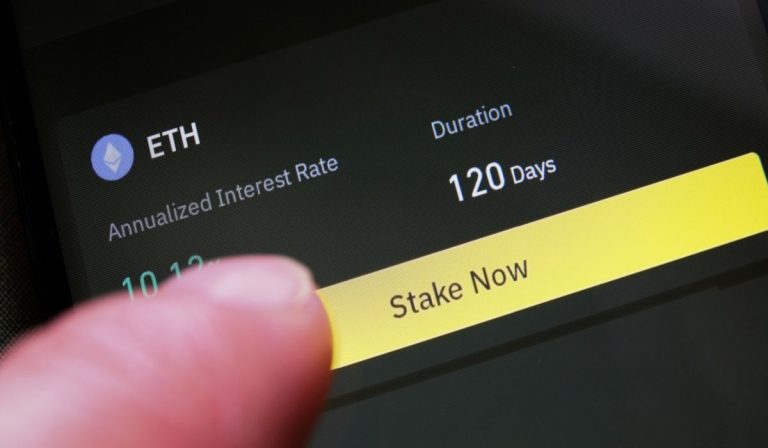“Bitcoin,” “blockchain” and “cryptocurrency” are words that most people have at least heard of since the industry exploded into the mainstream public consciousness over the last year and a half.
Over the course of this series of articles, we’ll be delving into the basics of the industry, providing an introduction to crypto that will give you a solid grounding in the technology and its lexicon (Cryptographers should never be allowed to name anything the public will eventually need to know.).
In short, it will be enough to understand what people are talking about and decide if you want to learn more.
Read more from PYMNTS’ Crypto Basics Series:
What’s a Blockchain and How Does It Work?
What’s a Crypto Wallet and How You Can Avoid Losing a Quarter Billion Dollars?
Advertisement: Scroll to Continue
How to Lose Your Crypto Without Being Hacked
Is Bitcoin Really Anonymous and How Can Law Enforcement Track It?
What’s a Consensus Mechanism and Why Is It Destroying the Planet?
What Is Mining, and Why Doesn’t the Business of Bitcoin Work
The Tokenomics of Crypto
What’s a Permissioned Blockchain and How Does Centralized Decentralization Work?
What’s a Satoshi? Bitcoin’s Million-Dollar ‘Penny’
What’s a Native Token, Non-Native Token and White-Label Crypto?
So, what is crypto lending?
In short, it’s a two-part system that works much like basic banking, at least at a casual glance: People lend money to a platform in return for interest, and others borrow, generally using their own crypto as collateral. Not too different from using savings deposits to fund home equity loans.
But the reality is a lot more complicated. First off, there are two types of lending platforms: centralized, meaning private companies, and decentralized finance (DeFi) platforms that use smart contracts to connect lenders and borrowers without a trusted third party like a bank in the middle. These are issued by standalone firms and by many crypto exchanges.
In this first of two articles, we’ll be looking at centralized crypto lenders, which have been in the news a lot in the last few weeks.
That’s because several of the biggest ones became insolvent after a big borrower defaulted on more than $1 billion in loans, causing them to halt withdrawals. One, Voyager Digital, entered bankruptcy this week, and two more, BlockFi and Vauld, were acquired at bargain-basement prices.
Read more: Reckless Crypto Lending, Opaque Operations Paved Voyager Digital’s Path to Bankruptcy
Another, Celsius, is struggling to avoid bankruptcy after investing lenders funds heavily in a lucrative but highly risky DeFi project.
See also: Collapse of Crypto Lending Platform Celsius Points to Bigger Problems
One question is why take out a loan using crypto collateral when you can just sell it?
There are several reasons, starting with crypto investors’ psychology. Even with the recent crash that has left about half of all bitcoin buyers underwater, many investors have made a lot of money — on paper — by holding onto their digital assets through thick and thin. They expect it to not only return to its November highs — bitcoin was near $70,000 — but to keep on rising far higher. Both bitcoin $100,000 and even bitcoin $1 million were common refrains last year. “Hodl,” meaning hold on for dear life, is a popular crypto meme.
Second, for the last six months anyone selling would be selling low.
Third, taxes. Crypto sales trigger capital gains; loans don’t. Even with interest, it’s a bargain.
How Lending Works
Crypto lending is fairly simple. You deposit crypto with the lender, you get back interest, generally referred to as yield, paid daily or even hourly. While the interest rates were always substantially better than banks offer — even 2% is 10 times what you’ll get from a savings account — the lending interest rates could be outrageous. Celsius, for example, was offering 17%.
Different cryptocurrencies and stablecoins offer different interest rates. Some lenders, like the Kraken exchange, only take institutional buyers, while others offer direct loans to individuals, which can be very small.
It’s worth noting that these are not “earn” programs run by some centralized exchanges and DeFi programs in which lenders capital is staked with blockchain validator to earn block rewards.
See here: PYMNTS DeFi Series: What is Staking?
How Borrowing Works
Borrowing can be very straightforward for individuals. You deposit cryptocurrency and get a loan — in either stablecoins or, from some lenders, in fiat currency.
Individual borrowers take out overcollateralized loans, generally requiring 125% to 150% of the amount borrowed, to account for crypto’s extreme volatility. This is automatically liquidated if the collateral falls to a point where it’s close to the amount borrowed, so margin calls must be dealt with quickly.
Terms are anywhere from a week to a year, and interest rates are generally lower than credit cards. Nexo, for example, offers terms of 0% to 13.9%
Bigger institutional borrowers cut individual terms with the crypto lending firms. This is where Voyager Digital and BlockFi went wrong, as they lent hundreds of millions of dollars in cash and bitcoins to a hedge fund, Three Arrows Capital, that lost heavily on a DeFi investment and defaulted.
The Risks
There are a number of dangers in lending and borrowing.
For borrowers, it’s mainly the risk of being liquidated, which means sell when the price is falling and getting a capital gains hit.
For lenders, you’re trusting the lender to loan out your capital carefully. If too many loans default, they can become insolvent and halt payouts — like Voyager and BlockFi did.
Aside from that, lenders often lock in their crypto, so it cannot be withdrawn during a set period of time, making it very illiquid.
Some lenders carry private insurance and others do not. But none have FDIC coverage like banks, and legal protections are scant.
Then there are hacks. While DeFi lending protocols are more susceptible, you’re trusting the lending borrowing firm to keep funds safely custodied.
Sign up here for daily updates on all of PYMNTS’ Crypto coverage.




